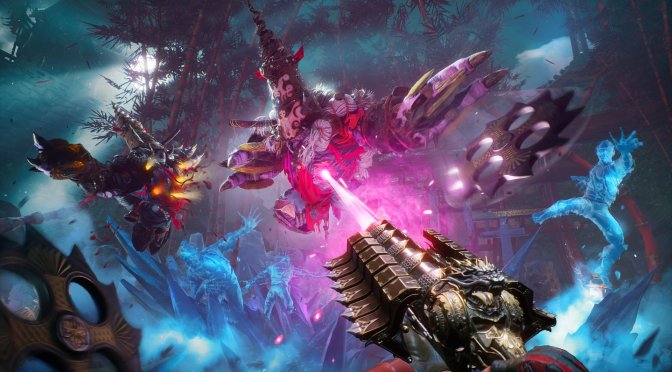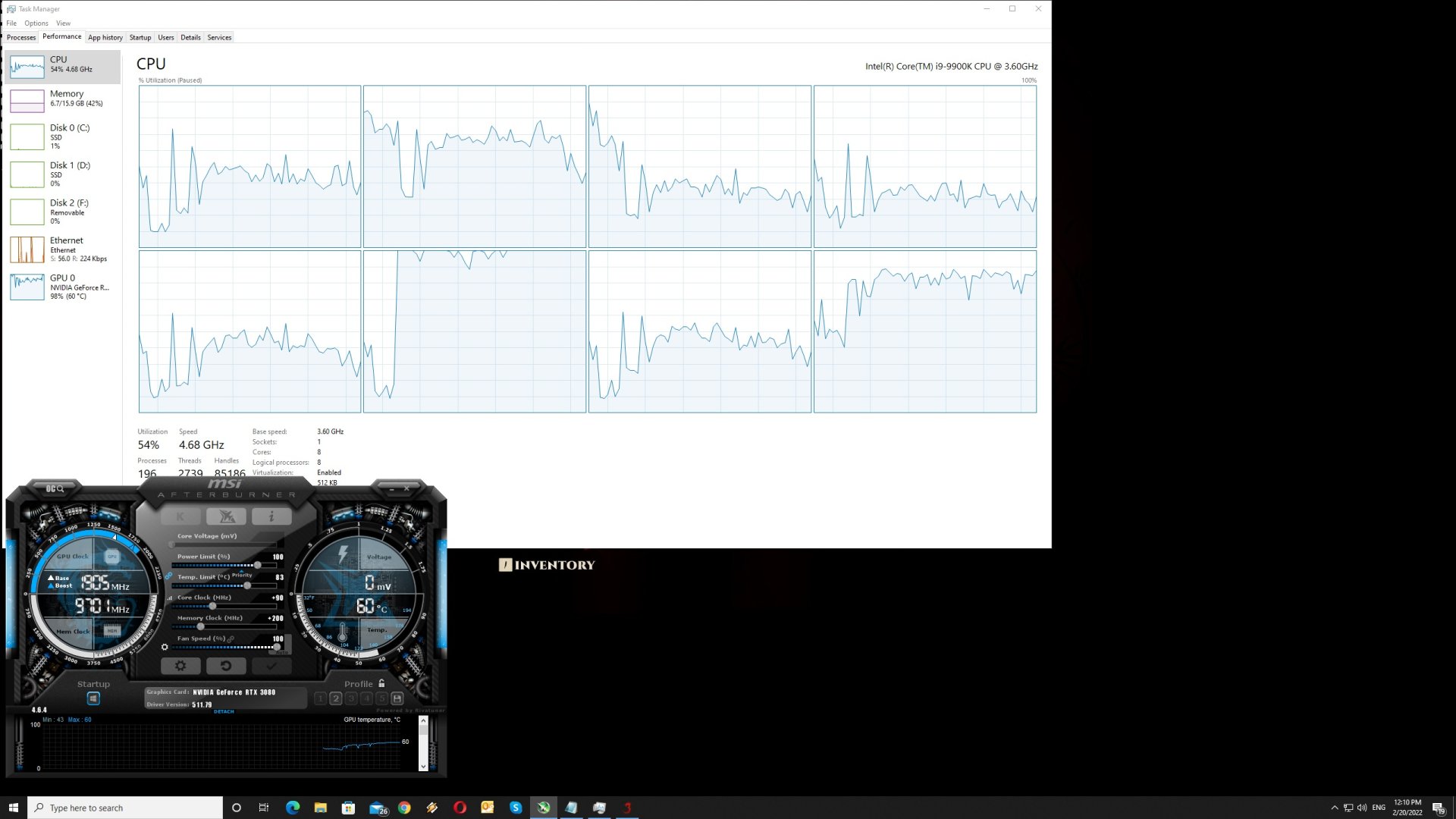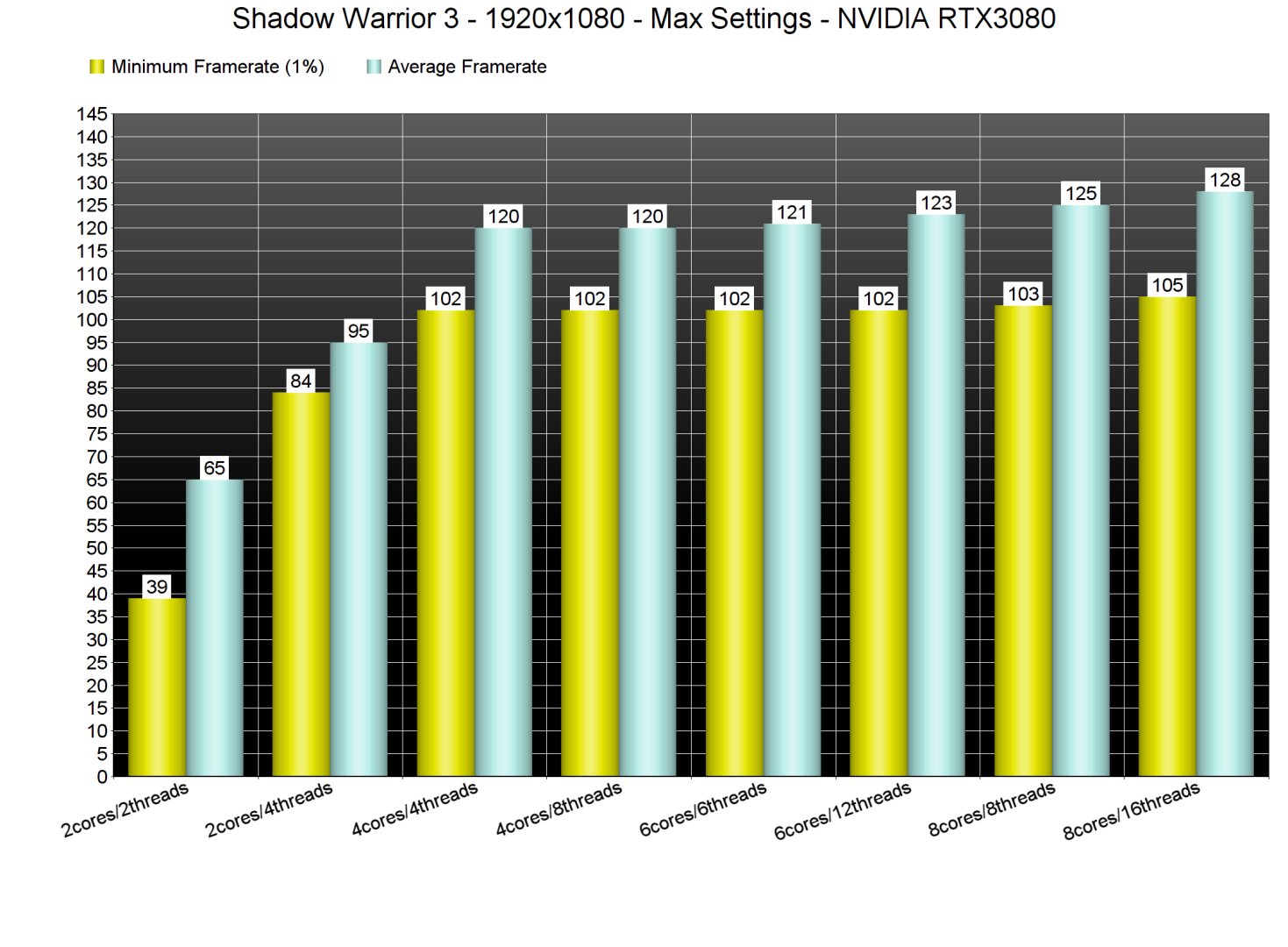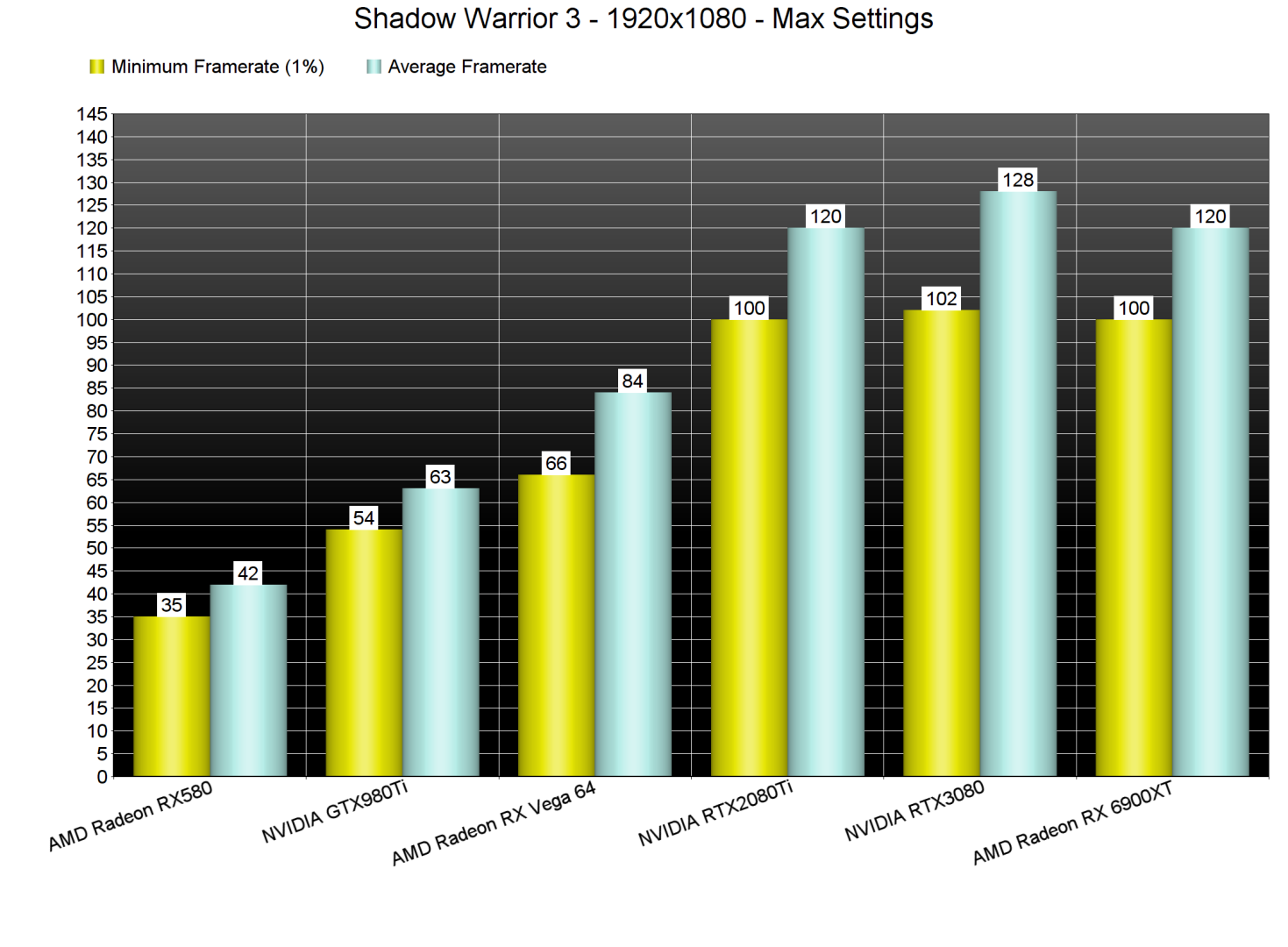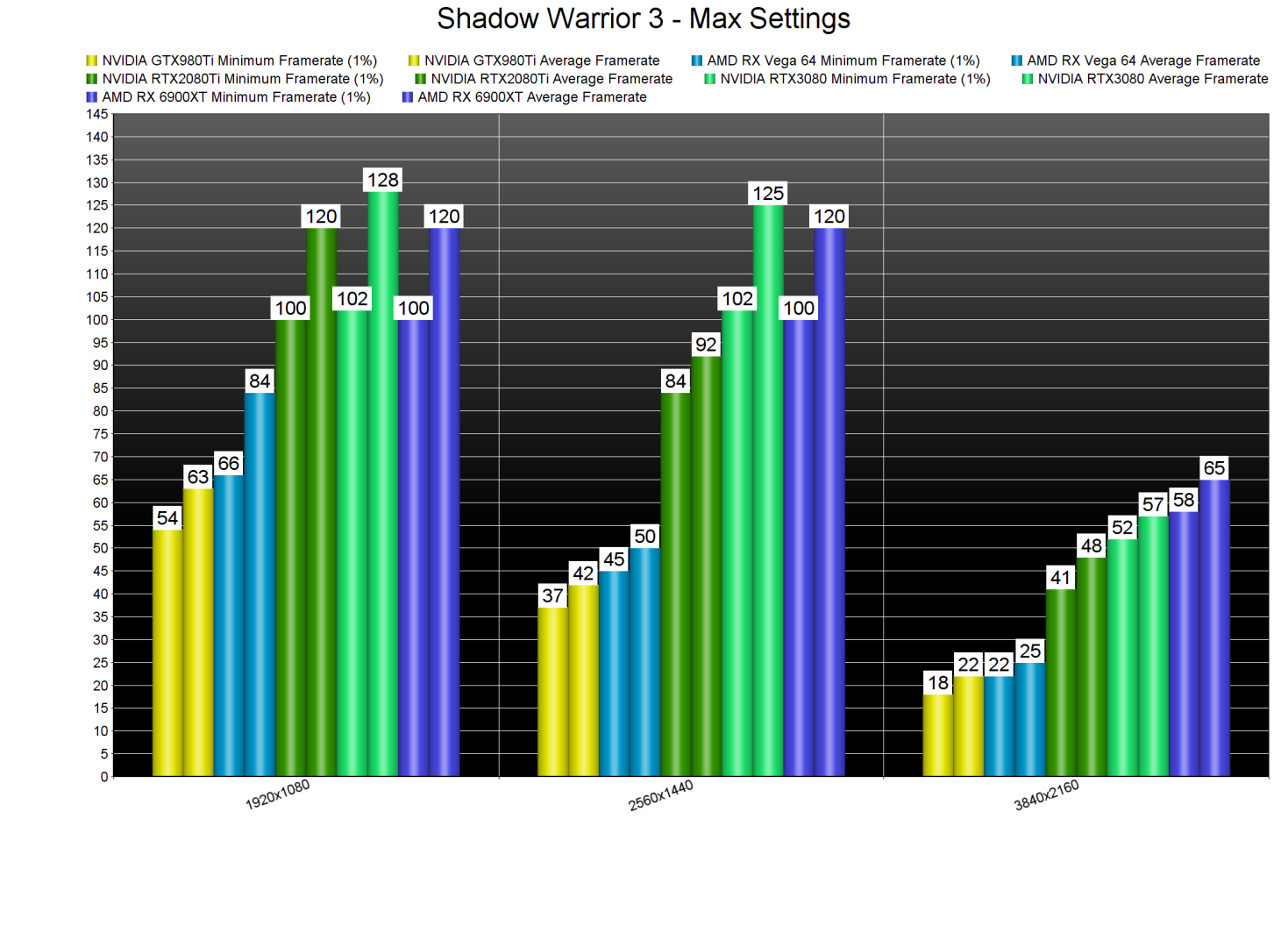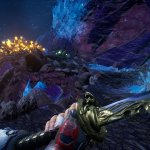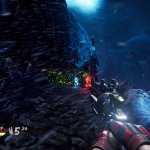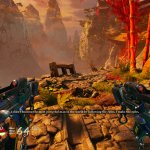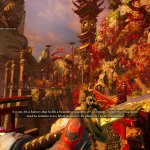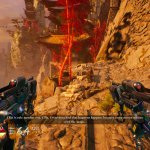Earlier this month, Devolver released the latest part in Flying Wild Hog’s Shadow Warrior series, Shadow Warrior 3. At launch, the game had major stuttering issues, which is why we’ve decided to slightly delay our analysis. Powered by Unreal Engine 4, it’s time now to benchmark it and see how it performs on the PC platform.
For this PC Performance Analysis, we used an Intel i9 9900K with 16GB of DDR4 at 3800Mhz, AMD’s Radeon RX580, RX Vega 64, RX 6900XT, NVIDIA’s GTX980Ti, RTX 2080Ti and RTX 3080. We also used Windows 10 64-bit, the GeForce 511.79 and the Radeon Software Adrenalin 2020 Edition 22.2.3 drivers.
Flying Wild Hog has added a respectable amount of graphics settings. PC gamers can adjust the quality of Anti-aliasing, Post Process, Ambient Occlusion, Shadows, Textures, Effects, SSR and Foliage. The game also supports NVIDIA’s DLSS and AMD’s FSR (you can find some benchmarks here). Additionally, the game has a FOV slider, a Framerate Limit Option, and a Resolution Scaler.
Shadow Warrior 3 does not feature any built-in benchmark tool. As such, we’ve decided to benchmark a demanding fighting scenario. Do note that we benchmarked one of the most demanding scenes at the beginning of the game. So, while the game may run significantly faster in other less demanding scenes, it can also run even slower at later (and more demanding) levels.
In order to find out how the game scales on multiple CPU threads, we simulated a dual-core, a quad-core and a hexa-core CPU. Surprisingly enough, our simulated dual-core system was able to run the game with constant 60fps at 1080p/Max Settings. That is obviously with Hyper-Threading enabled. Shadow Warrior 3 uses the DX11 API and appears to be mostly using four CPU cores/threads.
At 1080p/Max Settings, our top four GPUs were able to provide a smooth gaming experience. NVIDIA’s GTX980Ti was able to come close to a 60fps experience, although we did notice numerous drops to mid-50s.
At 1440p/Max Settings, our RTX2080Ti, RTX3080 and RX 6900XT had no trouble running the game. As for 4K/Max Settings, the only GPU that could run the game smoothly was the RX 6900XT. Again, keep in mind that this is a really demanding scenario. Furthermore, both DLSS and FSR look great in this title, so we recommend using them. RTX owners can use DLSS Quality, whereas everyone else can use FSR Ultra Quality.
Graphics-wise, Shadow Warrior 3 looks great. Its art style is amazing, and its characters are highly detailed. All human characters look great, and its dismemberment system is incredible. The game also packs some cool particle effects. Still, there are some graphical shortcomings. For instance, there are noticeable terrain pop-ins, and some shadows can look a bit pixel-ish. The game could also benefit from some RTGI, so it’s a bit disappointing that Flying Wild Hog has not experimented with it.
Before closing, we should mention one of the biggest issues of Shadow Warrior 3, and that’s its stuttering issues. The game currently suffers from both shader cache and traversal stutters. While the overall experience is not as awful as in other games, like Far Cry 6 or Halo: Infinite, we are certain that these stutters will disappoint some PC gamers. Shadow Warrior 3 is a DX11-only game, meaning that shader cache issues can still happen with that API. We are mentioning this because some people believe that these shader cache stutters are only present in DX12 (and blame that particular API). No, DX12 is not at fault for these stutters.
Moreover, these shader cache stutters prove that DX11 cannot magically fix a game that suffers from them. So no, Final Fantasy 7 Remake and other UE4 games don’t run better with DXVK or DX11. Some may believe that a game runs better in DX11 than in DX12, but that may be because the “X” game has already cached some shaders. Speaking of which, we suggest NVIDIA owners raise the Shader Cache Limit to 10GB. By doing this, you will increase the number of shaders your PC system can cache (which will result in fewer stutters in numerous games you’re playing as your PC won’t be deleting older shaders).
All in all, Shadow Warrior 3 can run with more than 60fps on a wide range of PC systems. The game does not require a high-end CPU, and both the DLSS and FSR implementations are exceptionally great. Thanks to its art style, Shadow Warrior 3 is also pleasing to the eye. Let’s now hope that Flying Wild Hog will be able to fix (or at least minimize) the game’s stutters via some future patches!

John is the founder and Editor in Chief at DSOGaming. He is a PC gaming fan and highly supports the modding and indie communities. Before creating DSOGaming, John worked on numerous gaming websites. While he is a die-hard PC gamer, his gaming roots can be found on consoles. John loved – and still does – the 16-bit consoles, and considers SNES to be one of the best consoles. Still, the PC platform won him over consoles. That was mainly due to 3DFX and its iconic dedicated 3D accelerator graphics card, Voodoo 2. John has also written a higher degree thesis on the “The Evolution of PC graphics cards.”
Contact: Email

